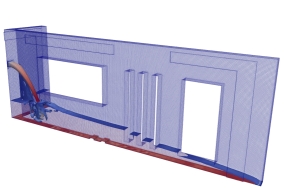Numerical simulation of fresh concrete flow: insight and challenges
DOI:
https://doi.org/10.21809/rilemtechlett.2019.92Keywords:
fresh concrete flow; rheology; numerical simulation; predictionAbstract
Recent developments in concrete technology are advancing into a scientific-based approach, where both experimental studies and numerical simulations are utilised to achieve an optimum mix design and an effective placement into formwork at the jobsite. Since the load carrying capacity and service life of concrete structures is fully dependent on the success of the placement process, researchers all over the world have started to work on casting prediction tools using different numerical software. However, a lot of work is still to be done in order to properly model the large-scale flow processes. This is because fresh concrete is a very complex material and its simulations involve complex material models and extensive computations. An exact material model of fresh concrete does not exist, and the researchers use diverse approximations to depict concrete flow. In this paper, we identify the main challenges for modelling fresh concrete and review the existing simulation methods. The advantages, disadvantages and application fields are discussed, including future perspectives for having numerical tools for practical use.

Downloads
Published
How to Cite
Issue
Section
License
Authors retain copyright of the articles published in RILEM Technical Letters and grant the journal the right of first publication with open access. The work is simultaneously licensed under Creative Commons Attribution 4.0 International License (CC BY 4.0) that allows others to share and adapt the work under the following terms: 1) a proper attribution is given in a form of bibliographic record with the DOI link directing to RILEM Technical Letters; 2) a link to the license is provided; 3) the changes (if any) are indicated.









